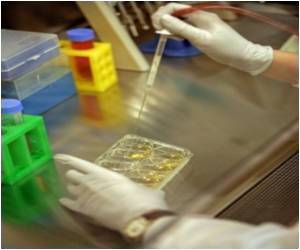P53 is one of the most important proteins implicated in cancer, which binds to DNA to regulate the activity of a large number of genes.

"The genetic risk factor we identified is associated with one of the largest risks ever reported for cancer," says study author Douglas Bell of the National Institute of Environmental Health Sciences at the National Institutes of Health. "We think it might prove useful for identifying individuals at the highest risk for cancer or who might benefit from preventive or therapeutic treatments."
About half of human cancers are associated with mutations in the p53 gene, which regulates vital cell functions as well as tumor formation in many tissues. Because p53 must activate a wide range of genes to influence cancer-related signaling pathways, Bell and Gareth Bond of the University of Oxford and the Ludwig Institute for Cancer Research speculated that cancer risk could be associated with genetic variation in p53-binding sites.
In the new study, the researchers searched genome-wide data sets for cancer-related single-nucleotide polymorphisms (SNPs)—sequence variants affecting a single DNA nucleotide. In general, SNPs in p53-binding sites were rare in the genome because they were selected against during evolution, presumably because of the importance of keeping tight control over p53 pathways that make life-or-death decisions for cells.
One of the strongest risk factors for cancer identified in the genome-wide association studies was a SNP affecting a p53-binding site located in the KITLG gene, which had been previously linked to testicular cancer. Their experiments revealed that KITLG activation by p53 is crucial for cancer-related processes, including cell proliferation. Because the SNP they identified is much more frequent in Caucasians than in Africans, it could partially explain the higher prevalence of testicular cancer in Caucasians.
The authors suggest that this SNP could have been selected for in lighter-skin individuals during evolution because the KITLG gene plays a key role in triggering the protective tanning response to ultraviolet rays. "It seems that over the long course of human evolution, the trade-off might have worked well enough to boost the frequency of the SNP, especially in the European Caucasian population," Bond says. "I'd speculate that serious sun damage to skin would have posed a mortal threat to our early ancestors."
Advertisement















